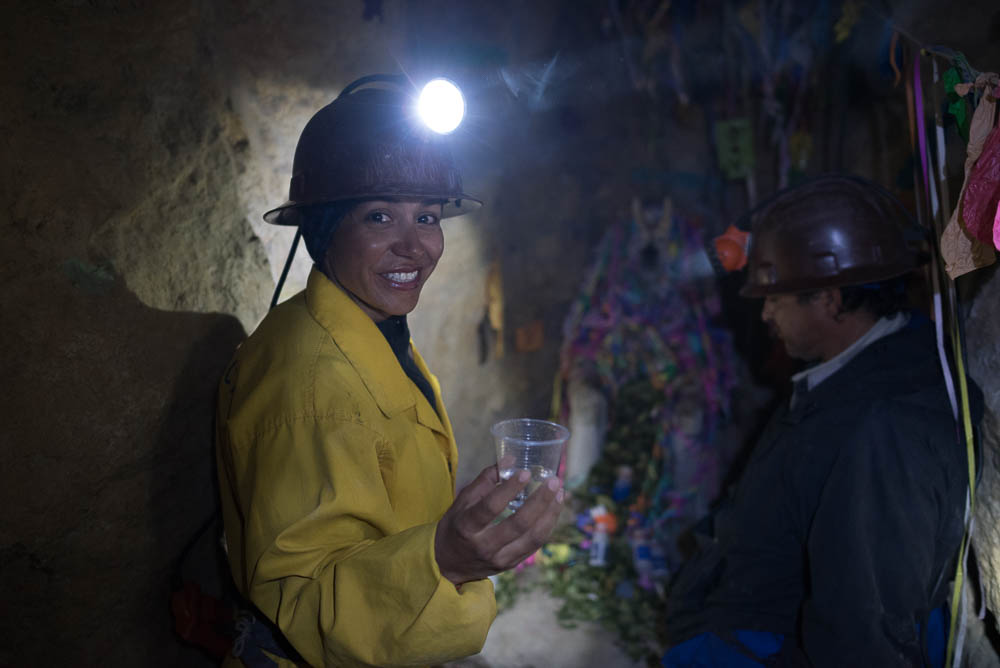
Potosí, Bolivia
The air is thin at 13,350ft (4,090m) in the colonial village of Potosi. The town sprawls on the flanks of Cerro RIco, clinging to a steep hillsides. This is the altiplano, a dry and inhospitable landscape of high-altitude, barren plateaus. This is the last place you’d expect to find civilization, yet this was once the 3rd largest city in the world.
Potosi exist because of Silver. It was discovered here in the mid-1500’s. The mine became the greatest source of income in the Spanish Empire. The silver coin of Potosi was the world’s first globally recognized currency. It is said that you could build a bridge to Spain with all the silver that has been extracted.
The wealth came at a great cost. Over three centuries an estimated 5 to 8 million indigenous and African slaves perished in the tortuous conditions. The work was incredibly treacherous. Those that survived or avoided accidents had short lifespans. Even today silicosis pneumonia, exhaustion, and accidents kill miners every year.
Tours of the mines are controversial. Safety cannot be guaranteed. The mines are still active and in constant use. There are noxious gasses, arsenic deposits, blockages, holes, collapses and many other hazards. Many believe that this is a tomb that should not be entered. The tunnels are narrow and claustrophobic, most remaining as they have been for hundreds of years. Every step brings danger. All of your senses tell you to leave immediately, but we had to see it for ourselves.
Instead of going with one of the few tour agencies we sought out our own guide. His name was Carlos. He had worked in the mine for 35 years. We began late in the day, stopping first to buy coca leaves, alcohol and cigarettes. All would prove to be critical to our safe passage.
At times we had to crawl. Often there was barely enough space for two people to pass. We were glad to be there after most of the workers had gone home. Still we saw a half a dozen of them hauling heavy baskets of ore. Some of the chambers were freezing, others were warm. At its deepest the mine plunges 4,000ft down. It extends for miles horizontally at various levels. Carlos said the temperatures can reach 100 degrees. The average career of a miner is 20 years. Roughly half of them develop silicosis pneumonia and other permanently debilitating lung afflictions.
Carlos was adamant that we not mention Jesus within the mines. The depths are the domain of the devil, he said, and this is a place to think dirty thoughts. Every half kilometer we encountered a “tio” statue. These devilish shrines command great deference from the miners. Without fail we gave each tio some coca leaves, put a lit cigarette in their mouths, poured a little puro (100% alcohol made from sugarcane) on their hands, and took a shot of puro ourselves. Carlos encouraged us to swear to please the tios.
Before long Valerie and I were quite intoxicated. The coca leaves and puro thinned our blood, a welcome painkiller for the aches and pains of navigating the narrow tunnels. We have spent a lot of time in caves, but not mines. Mines are terrifying. Some passageways were totally unstable with debris everywhere. Many had holes on every surface, ready for dynamite to be placed. We watched the miners collect the rubble in primitive carts and baskets and carry it out on their backs. It was dusty, dirty, dangerous, and extremely physical work.
Carlos had brought a stick of dynamite. It is frowned upon for guides to set off dynamite for tourists but Carlos convinced us it would further our respect for the process and that he would use it in a chamber that would be dynamited anyway, furthering the work. After 1.5 hours of navigation he called me over and told me to attach a “2-minute fuse” to a putty-like substance that he attached to the dynamite. He packed it tightly into a hole and told me to light it, then we scampered to an adjacent corridor, sat, and drank some puro. Sure enough there was a tio so we lit cigarette for it. Valerie hummed to try and soothe her nerves. Then Boom! We felt concussion blast deep in our chests. Oh my devil!
Our charge had struck a vein of zinc and silver. Carlos chipped off two small pieces gave them to us as souvenirs. Then we sat with our lights off, in total darkness, for about ten minutes, rarely speaking. A surprisingly peaceful feeling came over us. It was similar to the feeling of impermanence I feel in the mountains. Carlos told us that, even though he is retired, in times of stress comes to the mines and sits alone in the darkness. He always returns with a clearer head.
For us there was a palpable sense of death in these mines, after all they are the tombs of millions. We felt the tragedy that pervades Cerro Rico, the hill the mine sits on. Surprisingly, we also felt inspired by the perseverance of the human spirit. Despite the horror there is a spectacular bravery it takes to do this work. We also felt dignity and pride the modern miners, who work in cooperatives and share profits. The experience gave us perspective on where resources like silver come from, and how hard it is to extract them.
In the end we were glad we visited. Perhaps the bottle of puro let us see past the horrors, but I will not forget the strange connection I found in there. In many ways this is exactly why we travel, to learn, face fears, and see something beyond the official story. Our time in the Potosi mine was an exploration of an extraordinary chain of events that have shaped the world we live in.





















What do you think? Leave me a comment.